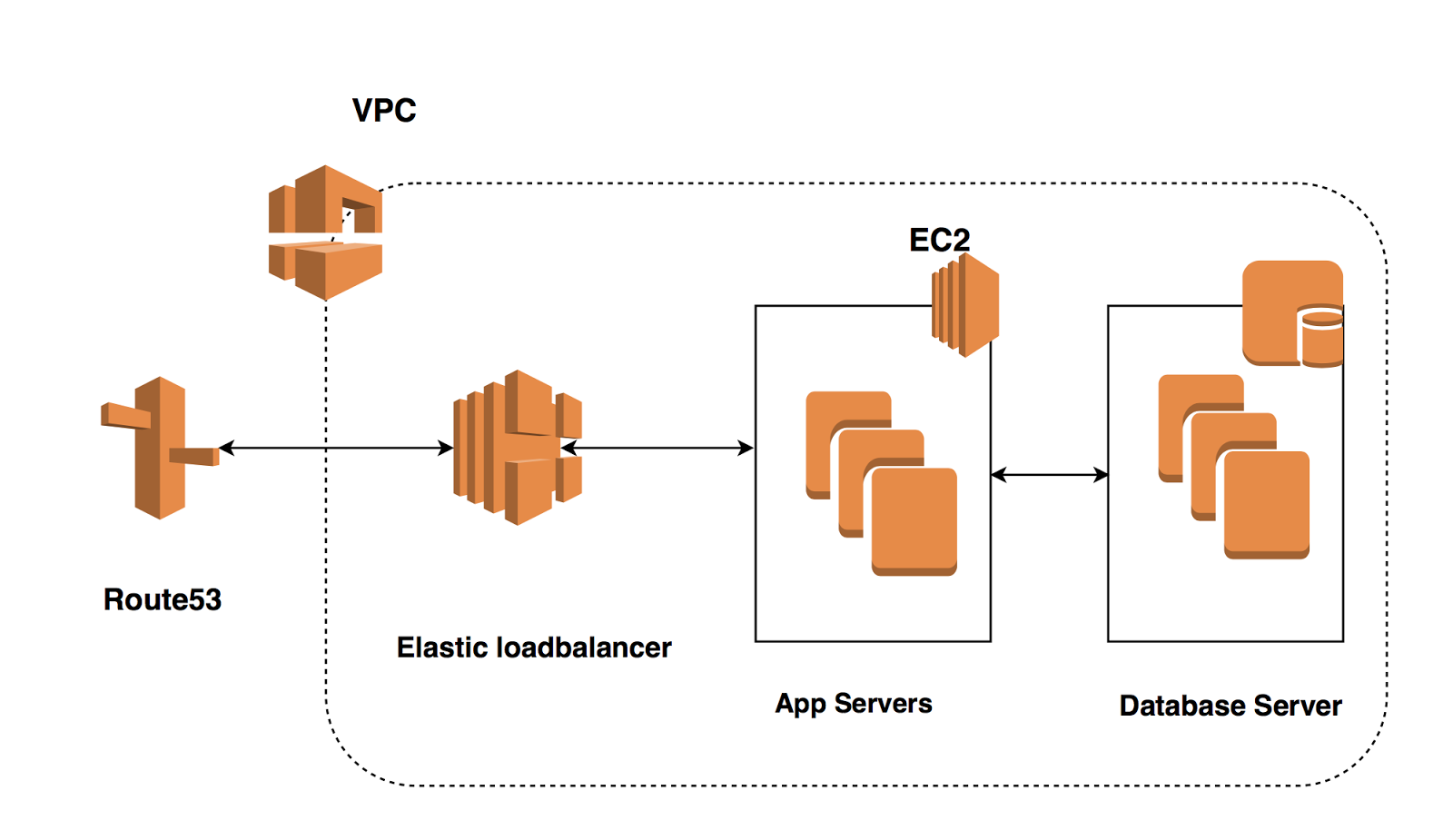At this stage of our application, the system architect or a DevOps guy comes into the picture, and suggests different infrastructure plans which are secure and efficient enough to handle application requests, and are cost effective as well.
As far as our application is concerned, we will build its infrastructure the same as shown in the following image:

We will follow the preceding architecture diagram for our application, which includes a few of AWS services such as EC2, VPC, Route 53, and so on.
There are three different ways by which you can provision your resources on the AWS cloud, which are as follows:
- Management console: This is the user interface which we have already logged into, and can be used to launch resources on the cloud. (Check this link for your reference: https://console.aws.amazon.com/console/)
- Programmatically:...



